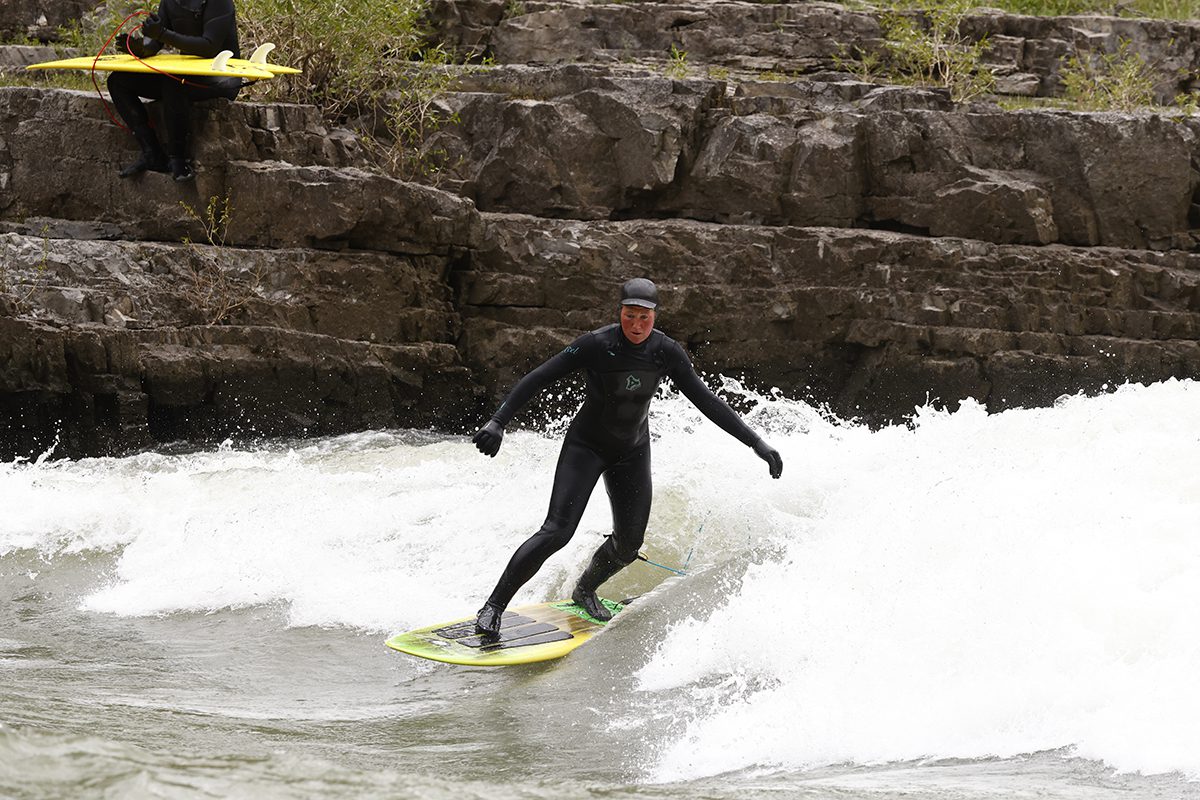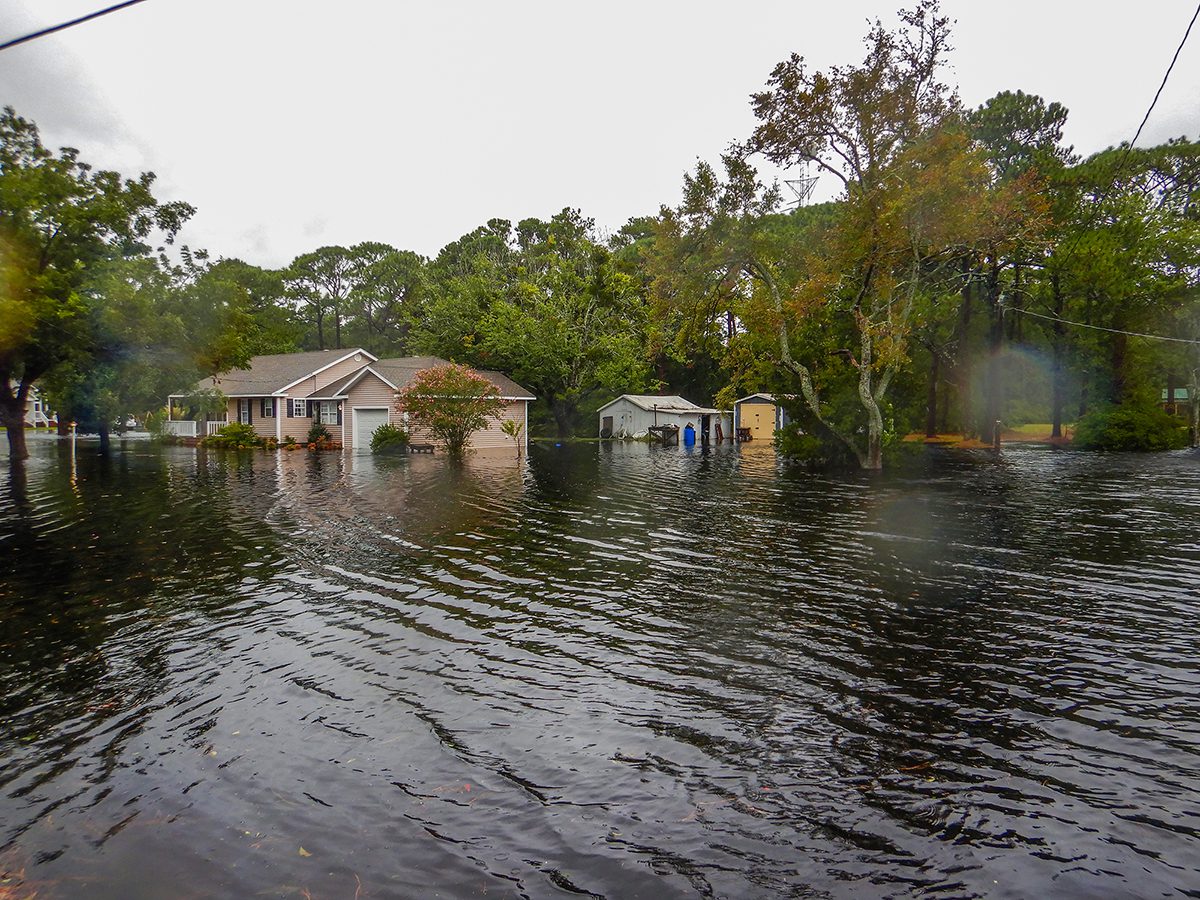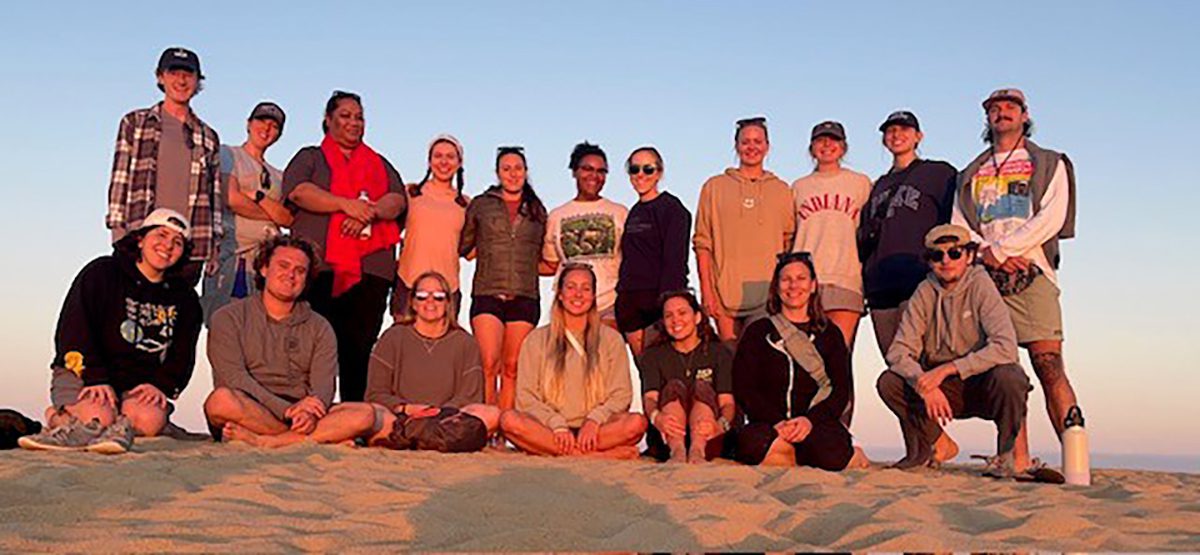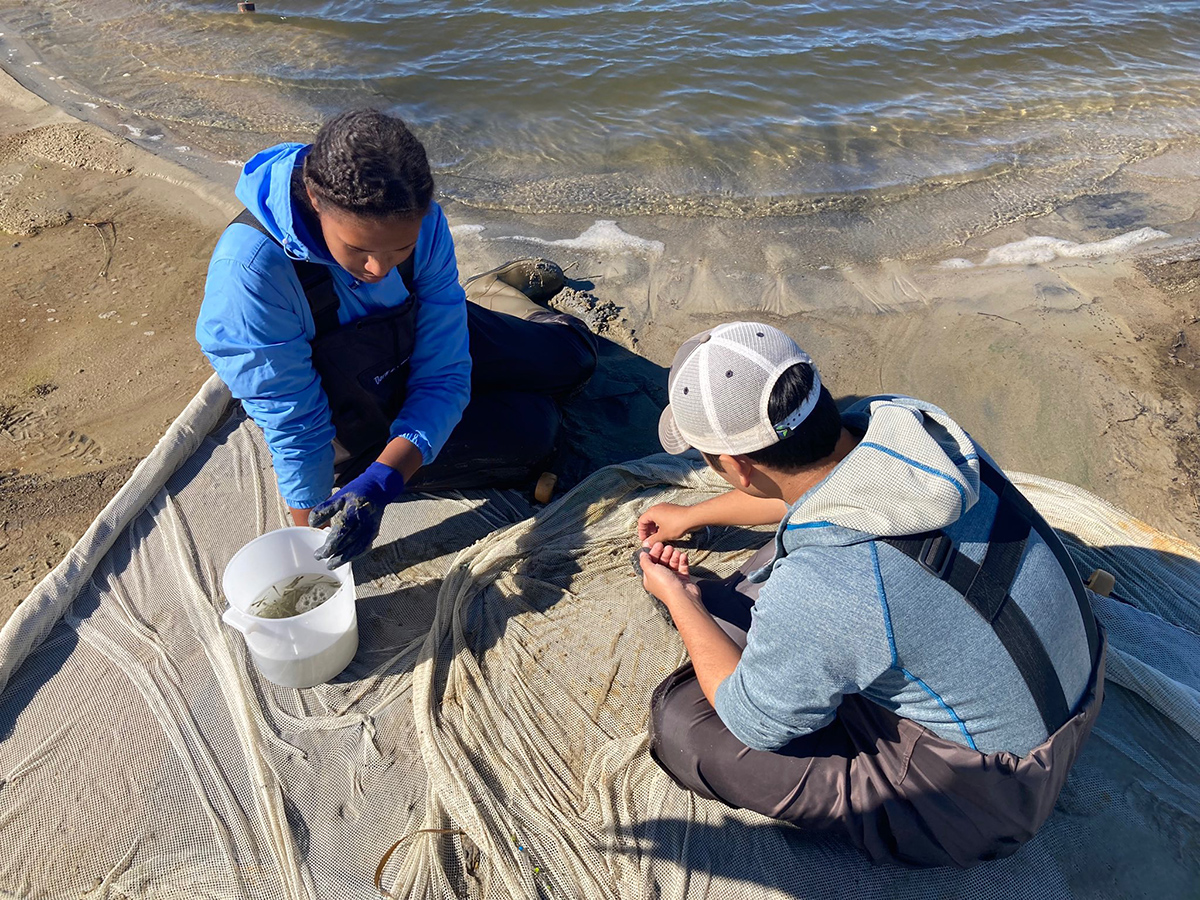
When Hurricane Dorian hit eastern North Carolina Sept. 5, 2019, it changed the northernmost barrier island of the 56-mile Cape Lookout National Seashore in Carteret County.
The Category 1 hurricane created dozens of new ponds on the uninhabited North Core Banks, which is just south of Ocracoke Island, across Ocracoke Inlet.
Sponsor Spotlight
Jon Altman, supervisory resource manager with the national seashore, explained to Coastal Review that these ponds are a part of the new landscape created by unique hurricane conditions that may only occur once every 50 years, sparking concern among the rangers.
“We wanted to understand this new landscape and ecology and how long these pond habitats may persist. The ponds have impacted our backroad system that allow us to use adaptive management to reroute vehicle traffic as needed for protected species management,” Altman said.
Altman approached the University of North Carolina Institute of Marine Sciences in Morehead City last winter for help from its capstone project, a semester-long group effort that works to answer an environmental research question for a client. The class is taught through UNC’s Institute for the Environment.
“We wanted to tap into the UNC capstone project as a means to learn more about the Hurricane Dorian ponds ecology,” Altman said.
Sponsor Spotlight
The students spent the semester traveling to the barrier island to collect data to analyze. They shared their findings Dec. 6 with a small, in-person group at UNC-IMS and an online audience.
Undergraduate student Mansi Sakarvadia introduced the project, “Ecosystem function and ecological services from overwash ponds on North Core Banks, NC.” She told the audience that because this project was for the National Park Service, the students tried to keep in mind while conducting research the park’s mission statement, which is “The National Park Service preserves unimpaired the natural and cultural resources and values of the National Park System for the enjoyment, education and inspiration of this and future generations.”
She added that they decided to make sure that the research addressed questions relevant to the National Park Service mission, as well.
“We want to make sure we answered questions that would help them with management decisions related to the ecological function of these ponds, as well as the human impacts of these ponds they play,” Sakarvadia said.
She explained that 2019’s Hurricane Dorian created a large surge of water that collected about 8 feet higher on the sound side of the island than the ocean side. When the storm finally passed over the island, this large surge of water was able to rush over the island and cut roughly 19 inlets through North Core Banks. Over time as these inlets sealed up, a series of new ponds were left.
The students looked at about nine ponds, six of them new, and three ponds that were there before Dorian.
The students worked in groups of two or three to study these six points: geomorphology and hydrology such as precipitation, overwash and the future of the ponds; biogeochemistry and bacteria, or water quality and carbon sequestration, within the pond; primary productivity, such as phytoplankton growth rate; benthic invertebrates such as marine worms, mollusks and crustaceans in the ponds; the fish in the pond; and the terrestrial animal usage of the ponds.
Conclusions presented by students throughout the presentation include the following:
- Precipitation is a major driver of elevation change and sediment being transported toward the ponds is driven by rain and wind, not overwash.
- The ponds have two harmful bacteria that could pose a public health risk.
- The old ponds sequester the most carbon.
- Not all ponds have the same composition of plants, algae and bacteria, nor do they behave in the same manner.
- There’s relatively low diversity and abundance of benthic, or bottom-dwelling, invertebrates.
- As the pond area increases, so does the biomass.
- The new ponds experienced more terrestrial animal activity compared to the older ponds they studied.
- Any change in the food web will directly affect the animal presence.
Undergraduate Logan Timms said that essentially, there are two different outcomes for the future of the ponds: They might disappear or they could persist.
“If these ponds disappear and dry up, of course the benthic invertebrates and the fish are going to be gone, and with that we’re going to see a huge decrease in the terrestrial animals,” Timms said, adding that would be negative for the wildlife community.
The ponds might be able to persist if the berms, or dunes, end up forming and grow taller, which may be the case at a few of the ponds. Also, it’s likely vegetation could start growing around the ponds and there would be a higher rate of carbon sequestration.
Timms said the student researchers recommend not installing any permanent infrastructure such as roads or buildings because the sand elevation is changing so dramatically. Any permanent structure would be costly and require maintenance. They also recommend avoiding putting in septic tanks near or uphill of the ponds to avoid nitrogen runoff. The students also encourage conducting seasonal monitoring of the ponds to keep an eye on microalgae and animal usage and warned that the ponds could pose a public health risk due to the presence of harmful bacteria.
Altman said in an interview that the key takeaways for the park service from the project is that sand accretion and movement by wind was a driving force during the study period.
“Of the ponds studied, they may persist anywhere from four to 41 months if conditions stay the same. Rain precipitation had the biggest influence on pond water levels,” Altman said.
Regarding the results, Altman said that they had expected that ocean overwash events would move the most sand toward and into the ponds, but turns out that the wind moved more sand during the study.
“The marine invertebrate sampling results at the ponds were really interesting,” Altman added. “We hope to continue invertebrate sampling during the shorebird breeding season to look at the abundance of this prey resource for the threatened piping plover.”
Altman said that the park service was glad to work with an area university marine laboratory “that provides opportunities for students to explore their career field in a national park.”
Nathan Hall, research assistant professor with UNC-IMS who works with the students participating in the capstone project, explained in an interview that the goal of this year’s project was to provide the seashore with information that would help improve management of the areas of North Core Banks where the dozens of new ponds were created by Dorian.
Hall said that the seashore’s mission requires a lot of knowledge about how the different habitats on the island work, and that’s what this project was all about.
“The data the students collected will provide baseline data for comparing how the ponds change over time at Cape Lookout National Seashore,” Hall said.
“Their data also gives an idea of the length of times the ponds are likely to exist and the potential trajectories of change of the ponds over time. Based on the students’ data, we think many of the ponds will fill in with sand and disappear while others may become surrounded by marsh and eventually function like some of the older ponds on the island,” Hall said. “The students also showed that the ponds are susceptible to eutrophication, which has implications for siting land uses (e.g. septic systems) that produce nutrients.”
Hall explained that the course, called Capstone: Analysis and Solution of Environmental Problems, always deals with some type of environmental problem or question that is relevant to management of coastal resources, Hall said. “To ensure that each project has relevance, we always have a client for each project that usually proposes the project idea as a theme or set of questions they’d like addressed.”
The students use the scientific method to answer the overarching question, which they broke down into the six different subtopics. “The students conduct literature reviews, develop research questions and hypotheses and then conduct novel research using state-of-the-art technologies to test their hypotheses. Finally, the students present their findings as both an oral presentation and a written report,” Hall said.
Through this project, the students not only learned the scientific method, but how to critically evaluate data, “the importance of good planning — if it didn’t get put on the truck, they didn’t have it — how to work as a team, and that field work can be really fun, and really hard work,” Hall added.
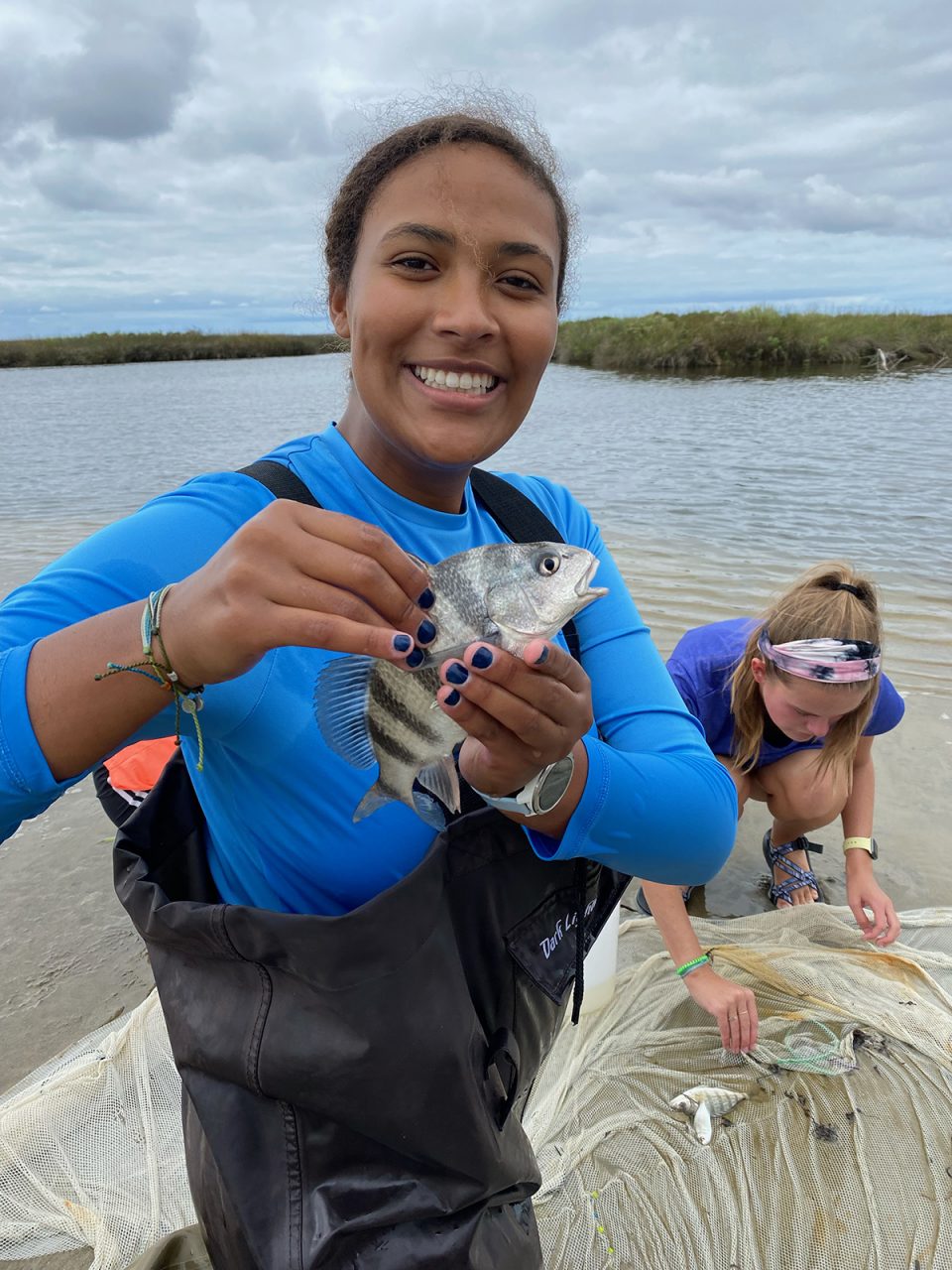
Stephanie Caddell, an undergraduate in this fall’s Capstone Project, is pursuing a bachelor’s in environmental studies at UNC Chapel Hill. She was part of the group that studied fish species in six of these new ponds.
“It was really neat to go out to Core Banks every few weeks and learn everything from the best methods of catching the fish and recording the data to bringing everything back to the lab and analyzing the data,” she told Coastal Review. “In the end we had some pretty neat findings about one of the ponds in particular that had drastically different fish species than any of the other ponds.”
Caddell added that it was rewarding to have the opportunity to tell the park service about these fish and how important they are to the community in the ponds.
“It was also really cool to connect with other groups such as the primary productivity group, the terrestrial animals group, and the benthic invertebrates group to form connections about the food webs in these habitats. Overall, I think it was a pretty amazing experience to be able to do real research that will be used to inform real management practices as an undergraduate student,” she said.




